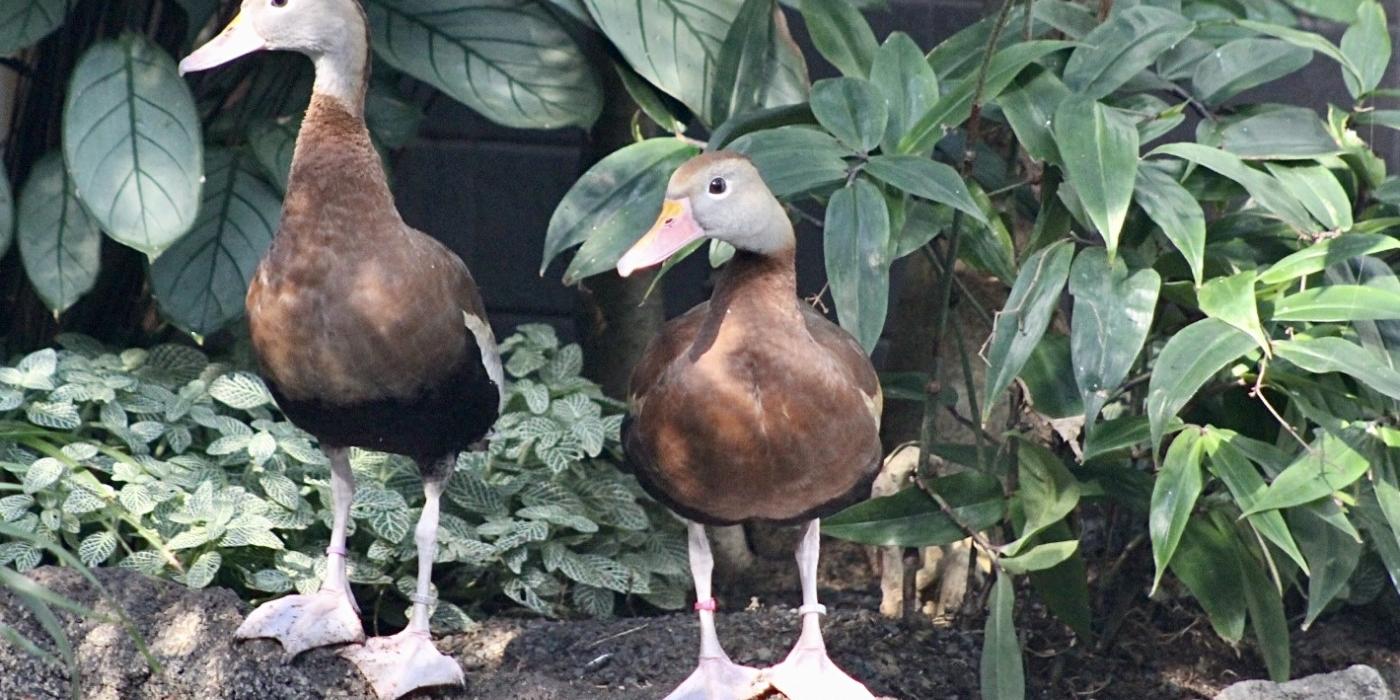Physical Description
Size
Native Habitat
Black-bellied whistling ducks are found in areas with a nearby supply of shallow fresh water, like marshes, swamps, lakes and ponds. They are also commonly found in farm fields, prairies and pastures.
They occur in Southern Texas, Louisiana, Arizona, Florida and rarely in other parts of the southern U.S.; also in Mexico, Central America, northern South America and the Caribbean.
While most black-bellied whistling ducks are non-migratory, those that live on the farthest northern and southern fringes of their range will fly to warmer areas during the winter months.
Lifespan
Communication
In addition to their signature whistling call, they have a series of calls and chirps they use to communicate while flocking.
Food/Eating Habits
Sleep Habits
Social Structure
Reproduction and Development
Black-bellied whistling ducks build nests either in tree hollows or, when predator animals are not present, on the ground among bushes or thickets. Nests built in tree hollows tend to be quite bare, but on the ground, the ducks will wave grasses and twigs into a shallow bowl-shape. Females lay nine-18 whitish-colored eggs per clutch. Sometimes, several females will lay their eggs in the same nesting area, with such nests containing up to 60 eggs at one time.
Both males and females take turns incubating the eggs, which hatch after about 25-30 days. Babies are born with soft yellow-and-white downy feathers and are ready to leave the nest after a day or two. They can feed themselves immediately, although they remain close to their parents for about eight weeks.
Black-bellied whistling ducks form monogamous pair bonds, staying together with the same mate to feed, nest and raise their young for many years.
Conservation Efforts
Help this Species
Be a smart consumer. Choose products made with sustainable ingredients, such as Smithsonian certified Bird Friendly coffees, which support farmers striving to limit their impact on wildlife and habitat.
Choose your pets wisely, and do your research before bringing an animal home. Exotic animals don’t always make great pets. Many require special care and live for a long time. Tropical reptiles and small mammals are often traded internationally and may be victims of the illegal pet trade. Never release animals that have been kept as pets into the wild.
Are you a hunter? You can be an incredible ally for conservation! Check the conservation status of the animals you hunt and use methods that don’t impact other animals.
Conservation starts with you! Join a citizen science project where you can help collect valuable data for scientists. Encourage your friends and family to get involved too.
Protect local waterways by using fewer pesticides when caring for your garden or lawn. Using fertilizers sparingly, keeping storm drains free of litter and picking up after your pet can also improve watershed health.
Never release balloons. Animals often mistake them for food or become entangled in their strings. Looking for an alternative? Try blowing bubbles instead!
Smithsonian's National Zoo and Conservation Biology Institute. (n.d.). Black-bellied whistling duck. Retrieved November 30, 2025, from https://nationalzoo.si.edu/animals/black-bellied-whistling-duck
Animal News

Giant Panda Qing Bao Gets a Checkup ›

7 Spooktacular Animal Facts for Halloween ›

